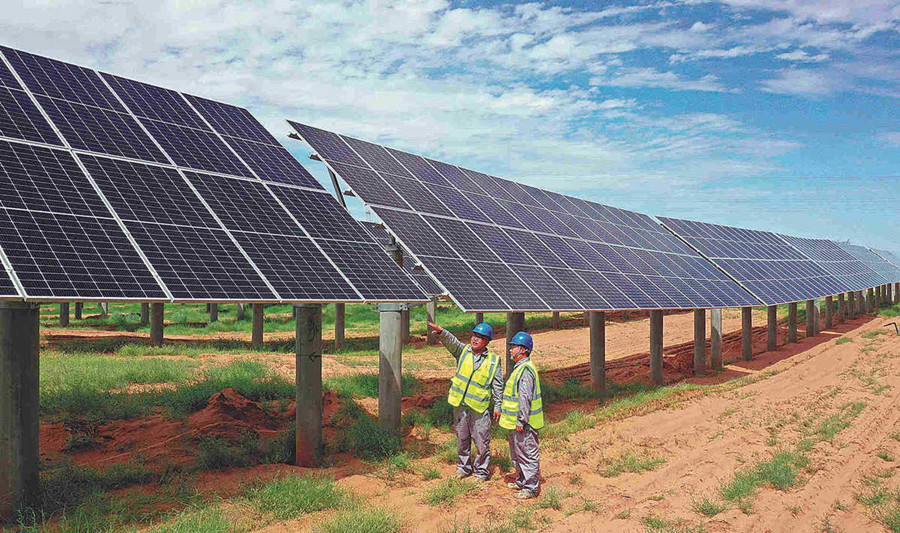Inner Mongolia sets renewable energy targets


Electricians inspect a photovoltaic power generation array in Dalad Banner, Inner Mongolia autonomous region, in July. [Song Weixing/For China Daily]
Region plans to generate more clean electricity than coal power by 2030
The Inner Mongolia autonomous region, one of the country's largest coal producers, has unveiled an ambitious action plan to peak its carbon dioxide emissions before 2030, vowing to generate more renewable energy than coal-fired power by 2030.
The action plan, unveiled on Friday, positively contributes to the country's climate targets of peaking CO2 emissions before the end of this decade and realizing carbon neutrality before 2060.
By 2025, the installed capacity for renewable energy generation in the region will exceed that for coal-fired power, according to the action plan. By the end of this decade, such renewable energy capacity will reach 200 million kilowatts, almost nine times the capacity of the Three Gorges Dam in Hubei province.
The hydropower station with the largest capacity in the world, the Three Gorges' electricity generating capacity stands at 22.5 million kilowatts.
Inner Mongolia will strive to build a national demonstration zone for a modern renewable energy economy, the document said. The priority in the work is to promote the construction of large-scale bases for wind and solar energy development.
In 2019, nonfossil energy accounted for 8.1 percent of Inner Mongolia's energy consumption. The region will endeavor to lift the proportion to 18 percent in 2025 and then to 25 percent by 2030.
Inner Mongolia will also beef up efforts to transmit more renewable energy to other regions. For new cross-regional power lines, at least 50 percent of their transmission should be from renewables.
According to a media release from the Inner Mongolia regional government, it will introduce more preferential policies to promote green transition.
Tax preferences will be introduced to motivate energy and water conservation, as well as the comprehensive utilization of resources, it said. The region will encourage financial institutions to offer favorable interest rates for projects that can prominently reduce carbon emissions.
In recent years, Inner Mongolia has made significant progress in boosting its renewable energy sector.
A solar photovoltaic device factory with a total investment of 30 billion yuan ($4.18 billion) in Ordos is expected to start production in mid-2023 and reach full production capacity by the end of 2024.
Once the plant goes into full production, the combined annual power generation capacity of the solar photovoltaic products will be roughly equivalent to that of two Three Gorges Dams, local authorities said.
Developed by Longi Green Energy Technology Co, the world's leading supplier of solar PV solutions, the factory is projected to generate 70 billion yuan in revenue annually.
"Once completed, it will be the world's largest individual solar photovoltaic manufacturing base," said Zhu Penghao, the project's general manager.
The plant is located in a zero-carbon industrial park, which aims to build a zero-carbon energy supply system with help of the Internet of Things and big data, according to local authorities. Power supply in the park will be completely zero-carbon by the end of 2023.







